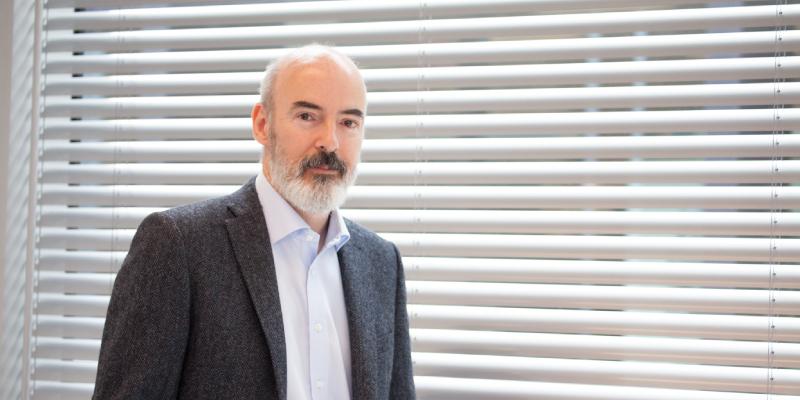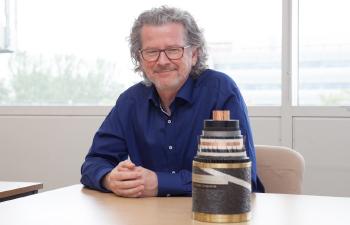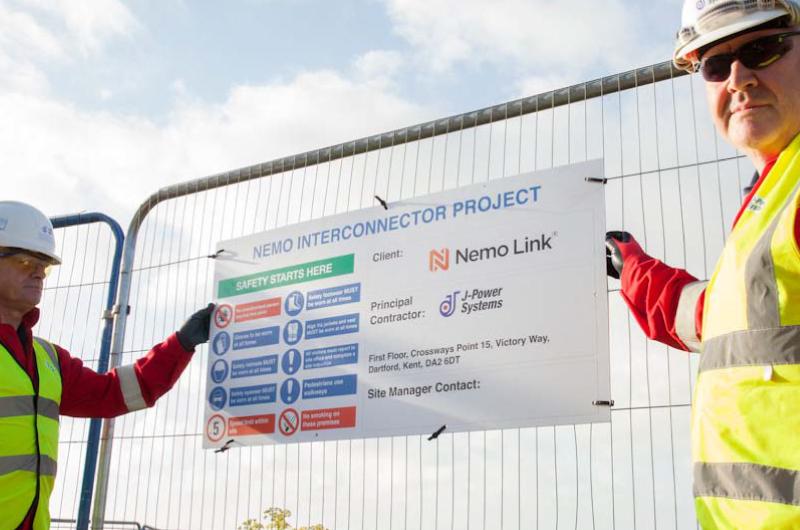
Meeting Tough Challenges to Be a World Leader
Development of the project draws the world’s attention
In June 2017, a large cargo ship left Hitachi Port, Ibaraki Prefecture, Japan. The load was transmission cables 118 km in length and 5,200 t in gross weight destined for laying between the UK and Belgium. Satoshi Nishikawa, General Manager, Engineering Department says: “It took about one year to manufacture the cable. We could not afford to fail in the production of the world’s first product. Accordingly, we constantly adhered to the quality first principle.” The cable will arrive in the UK by the end of July to start subsea installation in August.
Submarine cable installation is subject to a number of uncertainties, including adverse weather, unexploded ordnance and seabed mobility. A lot of work has been undertaken to mitigate these risks in advance of the installation operations. For example, a seabed survey in the UK offshore sector of the cable route discovered five mines remaining from the First and Second World Wars. There are also significant ‘local’ program constraints such as no access to the beach in Belgium due to the tourist season and no access to the beach in the UK between October and March due to environmental restrictions. “All of the aforementioned factors mean that considerable effort is required in the planning of the works in order to avoid delay to the project completion date (31 January 2019)” says Sean Phillips, the person responsible for the installation work.

The current project team consists of 25 members. They are specialists of various nationalities including the UK, Belgium, the Netherlands, and Ireland. They can be compared to a professional football team. Teruaki Kawaguchi, who supervises installation on site believes: “The members will function as a team if they play their roles properly in their assigned positions. The key to success lies in pursuing total optimization while taking the most advantage of partial optimization.”


Wishes of project members
The team members share the pleasure of taking part in the current project.
The Deputy Project Manager Gert Vanderheyden says: “A big project of this size involves a lot of money and many people, plus complex processes. However, successful completion of this project will give me a high degree of confidence.” Project Engineer Catherine Burke enthusiastically adds: “When I first worked with Japanese factory staff manufacturing cables, I came across international differences in work processes and required project documents and felt it was tough to overcome such differences and to reach mutual understanding. Nevertheless, I am proud of being able to solve the challenge and participate in the submarine cable project using the new technology.”
The Sumitomo Electric Group’s winning contract for the international UK-Belgium interconnector project had a large impact on the European electricity industry. Everyone in the sector now knows the Sumitomo Electric Group brand. It is of great significance that Sumitomo Electric has gained a position as a player. Both the British and Belgian governments, as well as the electricity industry, are following, with considerable interest, how the construction project develops.
Furuhashi states “Successful completion in January 2019 of this project will let us rise up in public esteem even more. That would leave us with great proven performance in installing the world’s first HVDC DC XLPE insulated cable operating at a maximum of 400 kV. Moreover, what makes me happy is the notion that through this project we will be able to help solve some social challenges in Europe. I will continue to make the most of the technology and human expertise of the Sumitomo Electric Group from a global perspective.”
Furuhashi is ready to meet the challenge of the next project.


Registration of public notification
If you register your e-mail address, we will notify you when the latest issue is published. If you wish, please register from the registration form.
To delete your registration, please visit here.
